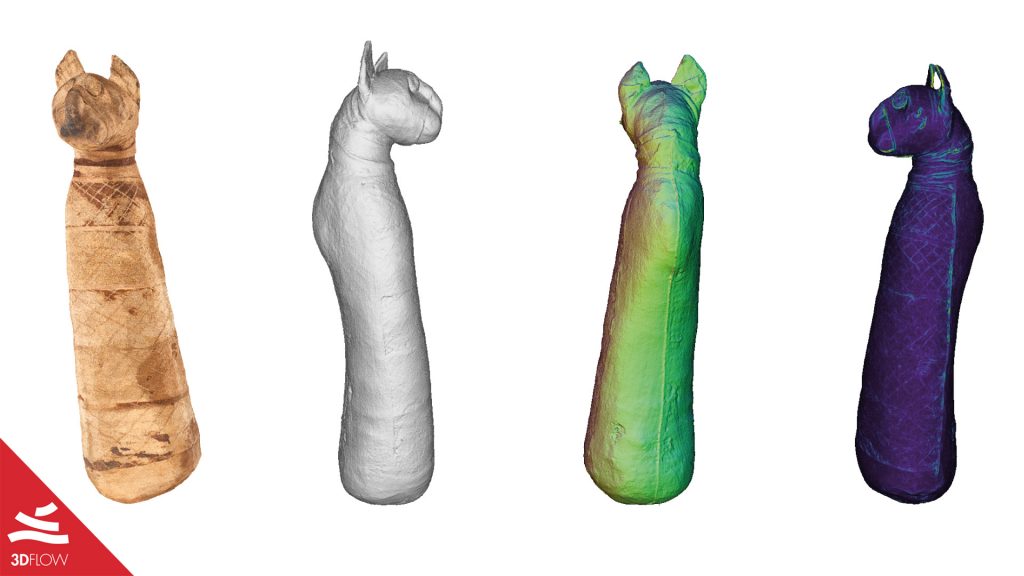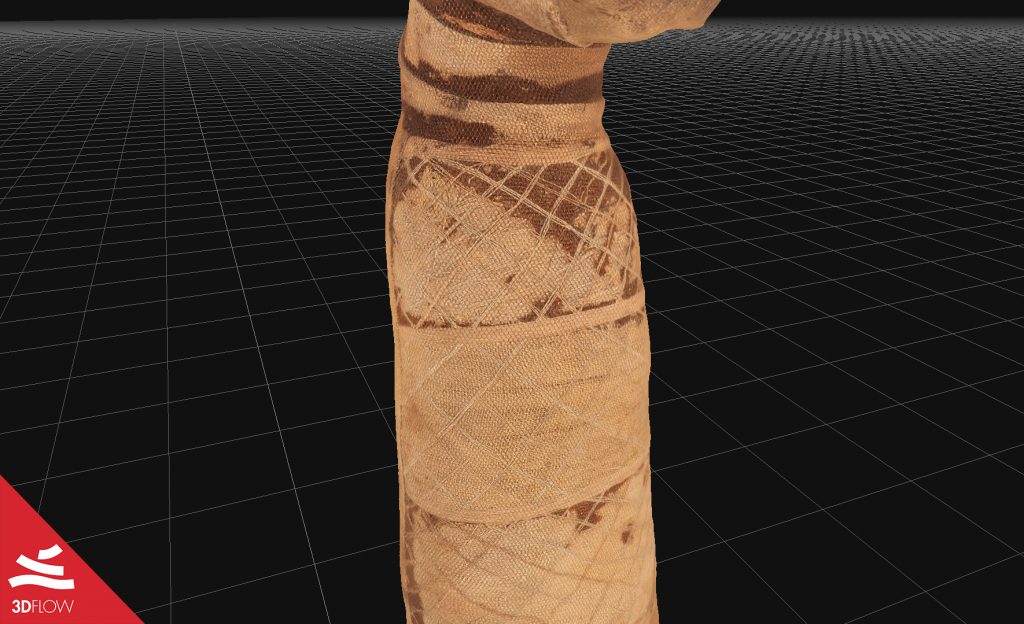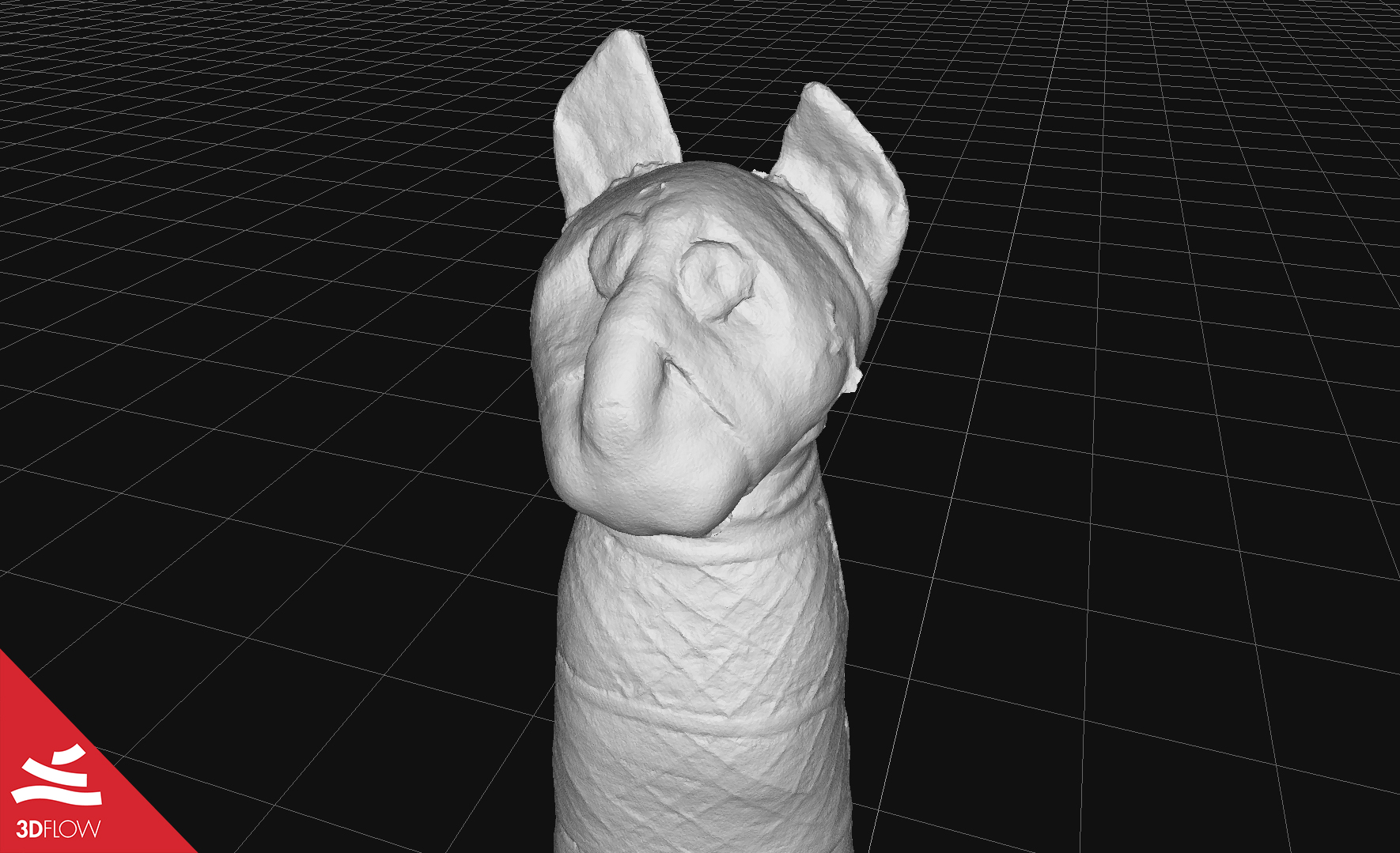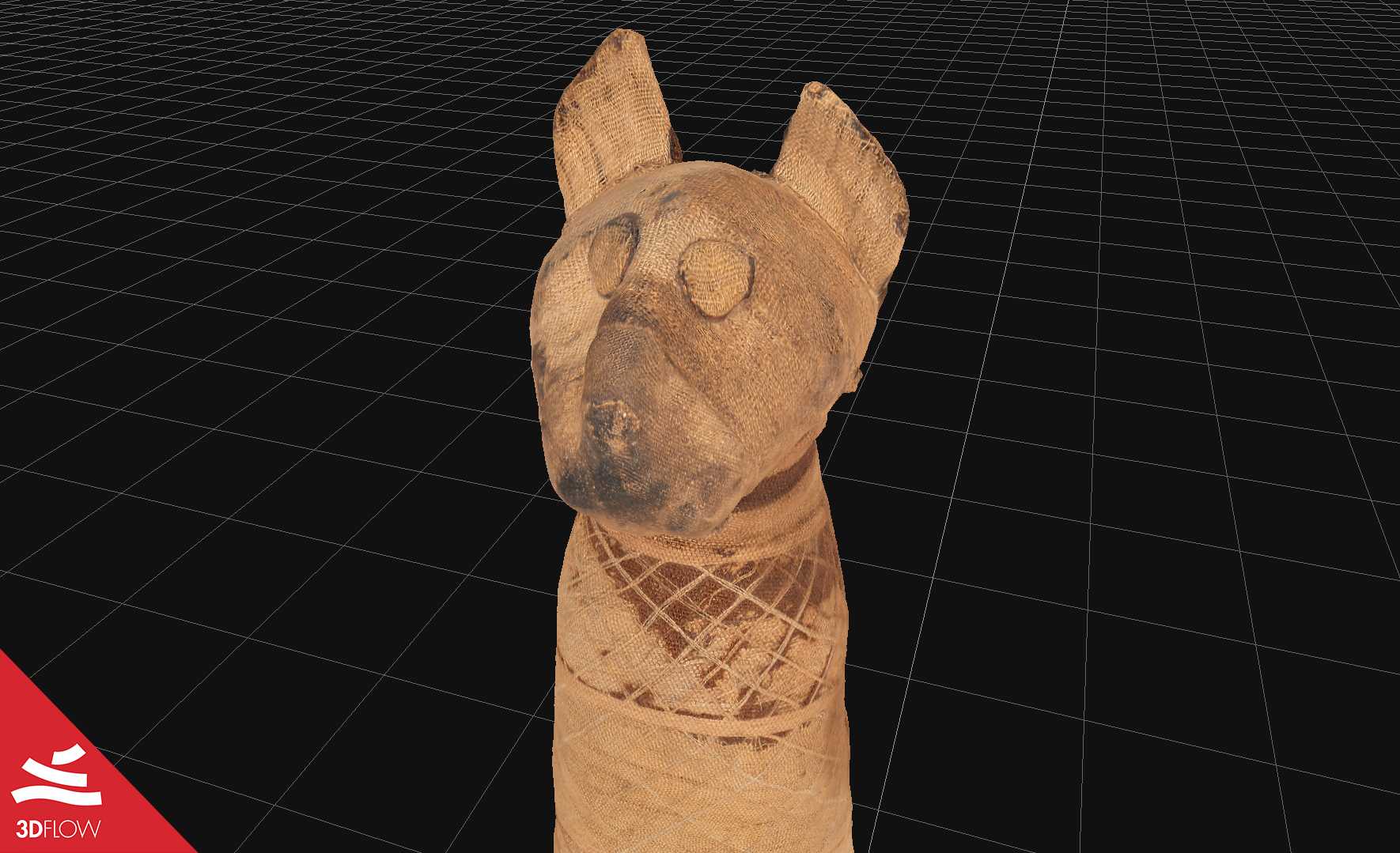The exhibition “Archeologia Invisibile” at Museo Egizio of Turin
Cultural Heritage, Temporary Exhibition, Archaeology, Close Range Photogrammetry, Egyptology, Archaeometry
The Museo Egizio of Turin, Italy, through the collaboration with 3Dflow as a supplier partner, set up the temporary interactive exhibition named “Archeologia Invisibile“.
The following case study focuses on one of the archaeological finds of the exhibition, whose data has been kindly provided by the museum’s Photography Department.

The exhibition and its goals
“Archeologia Invisibile” is a title that implies a specific goal: displaying and telling the story behind a certain object, a story not visible at first glance. Thanks to Archaeometry’s technique – a scientific method for studying and investigating finds – it was possible to go beyond the exterior appearance, shape and color of the objects by skillfully leveraging disciplines such as chemistry, physics and radiology. This approach led to the access of an initially inaccessible knowledge, yet more complete, of the museum’s collection items selected for the exhibition, such as their life cycle and their conservation over time.
In other words, quoting the exhibition page, what made the set up possible was “A network of institutions from all over the world that, through new technologies, place themselves at the service of the past to make visible what is invisible.”
The photogrammetric survey
“The usage of 3DF Zephyr was fundamental for a faithful documentation of the Egyptian Museum’s archaeological finds. Besides, the software’s UI is very intuitive while offering the possibility to customize each phase of the 3D reconstruction, according to the user’s needs and the nature of the scanned object.” – Federico Taverni, Photographer of Museo Egizio of Turin.
Archaeometry was not the only method used to arrange the museum’s exhibition; indeed, photogrammetry also played a pivotal role in creating a 3D database of the archaeological finds, thus making the exhibition more interactive and immersive through explanatory videos and 3D visualization tools accessible to visitors.
Among the several items scanned with photogrammetry by professionals of the museum and 3Dflow, the following work was carried out on a mummy of a cat dating back to 722-332 BC ca. 3D reconstruction was made by shooting 178 pictures later processed in 3DF Zephyr (fig. 1).

The photo-acquisition mode belongs to the close-range photogrammetry scenario: pictures were collected while turning around the subject placed on a white surface and pointing at its center. A Nikon D810 equipped with a 50mm lens was used with these settings:
- Shutter speed: between 1/200 and 1/250 sec.
- Aperture: f/16
- ISO: 64
Images were taken in JPG format with a resolution of 4912 x 7360 pixels, shooting in manual mode and with flash.
Data processing
Before starting with the 3D reconstruction phase, the pictures were slightly edited in Adobe Photoshop Lightroom and successively masked in 3DF Masquerade. Once imported in 3DF Zephyr, the category selected for data processing was “Close range” with “High Details” preset (fig. 2):



3D mesh geometry (left) and texture (right) of the mummy cat. © Museo Egizio di Torino
A new virtual tour of “Archeologia Invisibile” is now available and allows for an innovative and immersive experience thanks to the full 3D reproduction of the exhibition, from individual finds to exhibition halls. To access it, click this link and select the “Virtual Tour” button present on the website from any device.


